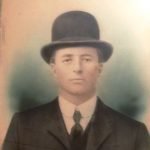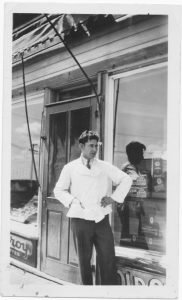This year the Lac du Bonnet and District Historical Society celebrated a tribute to our German settlers on Friday, December 2 at the Lac du Bonnet Community Center. It was a wonderful evening with the German dancers getting everyone off their chairs, dancing and singing. A silent auction, rainbow auction and 50/50 draw were held to raise funds for the Lac du Bonnet and District Historical Society. We would like to thank local businesses, members, and everyone who generously donated prizes and their time to make this event a success.
The history of Germans in Manitoba began as early as 1670 when Ruprecht Von Wittelsbach (Prince Rupert of the Rhine) became the first Governor of the Hudson’s Bay Company. One hundred and fifty years later, German mercenaries were among the settlers brought in by Lord Selkirk. They tilled land along the Seine River until 1826 when most of these settlers moved to Eastern Canada or the United States because they found the farming conditions on the area poor.
By the late 1870s, 7,000 German-speaking Mennonites arrived in Manitoba, followed by many more settlers of German descent in the early 1900s brought to Canada by news of the rich farm land in the West. There was great diversity among these German Manitobans: they practiced a variety of religions, including Lutheran, Baptist, Hutterite and Mennonite, and many spoke either High or Low German, which were so different of dialects that they could not always understand one another.
In this area, the first Lutheran German settler was Friedrich Karl Wenzel, who registered for a homestead in August 1884, which was located twelve miles north of Beausejour and two miles west of the Brokenhead River. By 1896, a large group of Russian-Germans arrived in the Brokenhead area. These farmers were very successful over the coming years. In December 1906, the Beausejour German Society held their first ball, which some 200 people attended. The areas of Thalberg, Glenmoor and Golden Bay were also settled by German families. By April 1900, some forty German families were living in Whitemouth, primarily in the area that would become River Hills.
On March 12, 1908, Hermann L. Otto of Thalberg reported to the German Newspaper Der Nordwestern that he had been “working for J.D. McArthur in a bush camp at Milner, where [he received] $30 per month.” He also stated that once they were finished at Milner, eleven men were moved to Lac du Bonnet to work there.

Arnold Weiss, 1905
Courtesy of Karen Weiss
Two of the local German settlers were Arnold Weiss and Roy Freund. Arnold Weiss moved to Lac du Bonnet in 1903 and, for sixteen years, worked as a sawyer for J.D. McArthur. In 1905, he married Emeila Bruneau. They lived on Second St. for five years until they purchased and worked two farms one mile west of Lac du Bonnet. Weiss Road, off Hwy. 214, serves as a reminder of where they lived with their twelve children. In 1921, Arnold took on the contract to build a road from Lac du Bonnet to Milner Ridge, which would provide additional access to Beausejour, Whitemouth and Winnipeg.

Roy Freund, outside Allard Building Store May 1932
Courtesy of Charlotte Kitzmann
Roy Freund emigrated from Germany in 1928, settling in Green Bay with his sister and family. He took work where he could: painting, harvesting, working in bush camps and mines, until he found a steady job at the butcher shop in the Allard Building. During WWII, Roy served with the Canadian Army. Upon return to Lac du Bonnet, he married Verna Slaboda and worked for Harry Springman for two years before becoming manager of the Allard Building store. In the early 1950s, having saved enough money, Roy built a new grocery store, the IGA Food Market, located on Park Ave. where the dental clinic now stands. In 1962, he expanded and built a new store on Second St. (where Dancyt’s Fine Foods is today) called Roy’s Solo Food Market. This development sparked the change from residential to commercial buildings on Second St. Roy also served on the Town Council, was Chairman of the School Board and was involved with many community pursuits including the Anglican Church, Legion and curling. Roy retired in 1972, selling his business to the Hudson’s Bay Company.
Today, 9% if the areas’ residents are German.